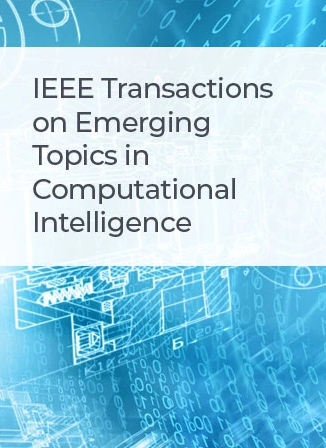Efficient Weight Pruning for Optical Neural Networks: When Pruned Weights are Non-Zeros
IF 5.3
3区 计算机科学
Q1 COMPUTER SCIENCE, ARTIFICIAL INTELLIGENCE
IEEE Transactions on Emerging Topics in Computational Intelligence
Pub Date : 2025-03-19
DOI:10.1109/TETCI.2025.3547856
引用次数: 0
Abstract
Optical neural networks (ONNs) have emerged as a promising solution for energy-efficient deep learning. However, their resource-intensive manufacturing process necessitates efficient methods to streamline ONN architectures without sacrificing their performances. Weight pruning presents a potential remedy. Unlike the conventional neural networks, the pruned weights in ONNs are not necessarily zero in general, thereby making most traditional pruning methods inefficient. In this paper, we propose a novel two-stage pruning method tailored for ONNs. In the first stage, a first-order Taylor expansion of the loss function is applied to effectively identify and prune unimportant weights. To determine the shared value for the pruned weights, a novel optimization method is developed. In the second stage, fine-tuning is further applied to adjust the unpruned weights alongside the shared value of pruned weights. Experimental results on multiple public datasets demonstrate the efficacy of our proposed approach. It achieves superior model compression with minimum loss in accuracy over other conventional pruning techniques.光神经网络的有效权值剪枝:当剪枝权值非零时
光神经网络(ONNs)已经成为一种很有前途的节能深度学习解决方案。然而,它们的资源密集型制造过程需要有效的方法来简化ONN架构,而不牺牲其性能。重量修剪提供了一个潜在的补救措施。与传统神经网络不同,网络的剪枝权值通常不一定为零,这使得大多数传统的剪枝方法效率低下。本文提出了一种针对网络的两阶段剪枝方法。在第一阶段,利用损失函数的一阶泰勒展开式来有效地识别和修剪不重要的权重。为了确定剪枝权值的共享值,提出了一种新的优化方法。在第二阶段,进一步应用微调来调整未修剪的权重以及修剪后的权重的共享值。在多个公共数据集上的实验结果证明了该方法的有效性。与其他传统修剪技术相比,它以最小的精度损失实现了卓越的模型压缩。
本文章由计算机程序翻译,如有差异,请以英文原文为准。
求助全文
约1分钟内获得全文
求助全文
来源期刊

IEEE Transactions on Emerging Topics in Computational Intelligence
Mathematics-Control and Optimization
CiteScore
10.30
自引率
7.50%
发文量
147
期刊介绍:
The IEEE Transactions on Emerging Topics in Computational Intelligence (TETCI) publishes original articles on emerging aspects of computational intelligence, including theory, applications, and surveys.
TETCI is an electronics only publication. TETCI publishes six issues per year.
Authors are encouraged to submit manuscripts in any emerging topic in computational intelligence, especially nature-inspired computing topics not covered by other IEEE Computational Intelligence Society journals. A few such illustrative examples are glial cell networks, computational neuroscience, Brain Computer Interface, ambient intelligence, non-fuzzy computing with words, artificial life, cultural learning, artificial endocrine networks, social reasoning, artificial hormone networks, computational intelligence for the IoT and Smart-X technologies.
 求助内容:
求助内容: 应助结果提醒方式:
应助结果提醒方式:


